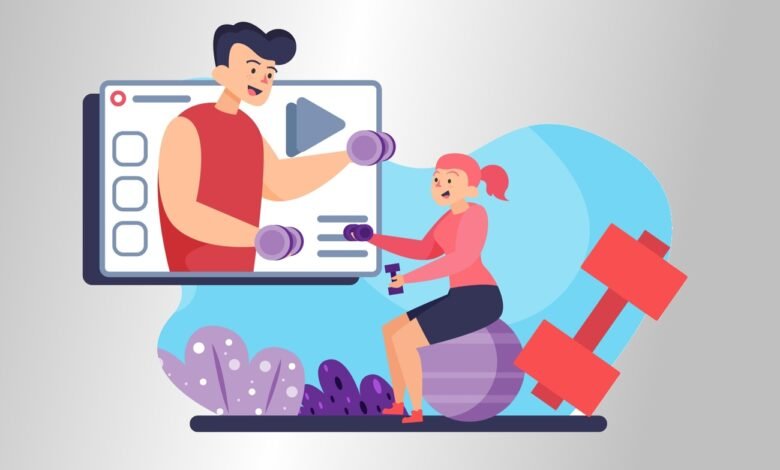The Benefits of Gamification in Online Education: Engaging Learners and Enhancing Retention

In the world of online education, keeping learners engaged and motivated is important for effective knowledge acquisition and retention. One innovative approach to achieving this is through gamification, which involves incorporating game design elements and mechanics into educational content.
Gamification in education leads to learning much engaging and fun. The goal of gamification in online education is to make a customized, supportive, and engaging learning atmosphere that motivates students to participate and excel in their studies actively. Game based learning solutions in online education refers to the integration of game-like elements and mechanics into the learning process to increase student engagement, motivation, and learning outcomes. It involves using elements such as points, levels, badges, leaderboards, challenges, and rewards to make the online learning experience more interactive and enjoyable.
Read More: The Impact of Gaming on Mental Health and Well-Being
Benefits of Gamification in Education
This blog will tell the benefits of gamification in online education, exploring how it can enhance learner engagement, boost retention, and ultimately improve overall educational outcomes.
1. Enhancing Learner Engagement
Gamification uses elements such as points, badges, leaderboards, and progress tracking to make learning more connected. It taps into our natural drive for competition, achievement, and reward. It can lead to increased participation, better focus, and a greater interest in the subject matter.
2. Breaking Down Complex Concepts
By presenting information in a structured and interactive manner, gamified learning solutions make it easier for learners to understand and retain new ideas. This approach can be particularly beneficial for subjects that are typically perceived as difficult or boring, such as mathematics or science.
3. Encouraging Active Learning
Gamification promotes active learning by requiring learners to engage with the material in a hands-on, interactive way. This active participation not only helps learners retain information better but also fosters a deeper understanding of the subject matter. By engaging learners in this manner, gamification can lead to more meaningful and long-lasting learning experiences.
4. Personalizing the Learning Experience
This personalization can help learners feel more in control of their education, leading to increased motivation and engagement. Additionally, gamification can provide personalized feedback and recommendations based on a learner’s performance, further enhancing the learning experience.
5. Fostering Collaboration and Communication
Many gamification techniques involve social and collaborative elements, such as team-based challenges or online forums for discussion. These features can encourage learners to communicate and collaborate with their peers, fostering a sense of community and support. This collaborative environment can lead to increased engagement, knowledge sharing, and a more enjoyable learning experience.
6. Boosting Retention and Knowledge Application
Gamification’s focus on immediate feedback, rewards, and progress tracking can help learners retain information more effectively. By providing learners with clear indicators of their progress and achievements, gamification can instill a sense of accomplishment and motivation to continue learning. This heightened motivation can lead to better retention of information and improved application of knowledge in real-world situations.
7. Encouraging Self-Motivation and Time Management
Gamified learning solutions often involve setting goals and deadlines, which can help learners develop essential self-motivation and time-management skills. By working towards specific objectives and experiencing the satisfaction of achieving them, learners can develop a stronger sense of responsibility for their education. This self-motivation can lead to increased engagement, better time management, and, ultimately, improved learning outcomes.
8. Tracking and Analyzing Learner Progress
Gamification platforms typically offer comprehensive tracking and analytics tools, allowing educators to monitor learner progress and improvement. This data is used to inform instructional decisions, tailor content to individual learners’ needs, and adjust the gamification elements to maximize their effectiveness.
9. Enhancing the Overall Learning Experience
By incorporating gamification elements into online education, educators can create a more engaging, enjoyable, and effective learning environment. This enhanced learning experience can lead to increased learner satisfaction, better educational outcomes, and a more positive perception of online education as a whole.
Ways to Use Gamification in Online Education
By integrating these gamified elements into online education, educators can foster a more dynamic and stimulating learning environment to motivate students. Here are some ways to use gamification in online education:
- Incorporate Progress Tracking: Integrate a visual progress bar or tracker that allows students to monitor their advancement through the course material. It helps learners to stay motivated and engaged as they see their achievements unfold.
- Use Badges and Achievements: Award students with digital badges or achievements for completing specific tasks, mastering topics, or reaching milestones. The sense of accomplishment associated with earning these badges can encourage continued participation and effort.
- Implement Points and Leaderboards: Assign points to various learning activities and display leaderboards to showcase top performers. It can create friendly competition and motivate students to strive for higher scores, fostering a sense of achievement and recognition.
- Introduce Storytelling Elements: Create narrative-driven scenarios or quests that guide students through the learning process. By incorporating storytelling elements, students can become more immersed in the educational content and feel a stronger sense of purpose and engagement.
- Gamify Assessments: Transform quizzes and assessments into interactive challenges or games, such as trivia quizzes, puzzles, or simulations. This approach can make the evaluation process more engaging and enjoyable for students while still measuring their understanding of the material.
- Offer Unlockable Content: Provide additional learning materials, bonus modules, or supplementary resources that students can unlock upon achieving specific goals or completing designated tasks. It can incentivize continued exploration and mastery of the subject matter.
- Include Collaborative Games: Incorporate multiplayer or team-based activities that promote collaboration and interaction among students. By working together to solve problems or complete tasks, students can build camaraderie and develop vital teamwork skills.
- Simulate Real-World Scenarios: Create simulations or role-playing activities that mirror real-world situations relevant to the course material. This hands-on approach can enhance practical application and critical thinking, making learning more meaningful and impactful.
- Offer Customization and Personalization: Allow students to customize their learning environments, avatars, or profiles to reflect their preferences and personalities. This personalization fosters a sense of ownership and investment in the learning experience.
Read More: Redefining Fun: Exploring the Evolution of Gaming and Its Impact on Culture
Effects After Using Gamified Learning Solutions
In recent years, the integration of gamification into online education has gained significant attention as a powerful tool to enhance student engagement, motivation, and learning outcomes. The positive effects of gamified learning solutions in online education are numerous, and they have the potential to transform the way learners engage with and benefit from digital learning platforms.
Enhanced Engagement and Motivation
One of the most significant effects of gamification in online education is the enhancement of student engagement and motivation. By introducing elements of competition, progression, and achievement, gamification captures students’ interest. It encourages them to participate in their learning actively. The use of rewards and recognition for completing tasks or achieving milestones creates a sense of accomplishment. It drives students to strive for improvement consistently. As a result, students are more likely to remain focused, committed, and eager to explore new topics and skills within the online educational environment.
Improved Learning Outcomes
Gamification has been shown to positively impact learning outcomes by providing students with opportunities to apply and practice their knowledge dynamically and interactively. Through the use of interactive quizzes, simulations, and challenges, students can reinforce their understanding of course material and develop critical thinking, problem-solving, and decision-making skills.
Fostering a Collaborative Learning Community
Another notable effect of gamification in online education is its ability to foster a collaborative and supportive learning community. By incorporating social elements such as team-based challenges, peer-to-peer competitions, and collaborative quests, gamified environments encourage students to work together, share knowledge, and learn from each other. It not only cultivates a sense of camaraderie and teamwork but also promotes a more inclusive and participatory learning experience for students, ultimately enhancing their interpersonal and communication skills.
Personalized Learning Experiences
Gamification offers the opportunity to tailor learning experiences to individual student needs and preferences. By allowing students to progress through content at their own pace, earn rewards for mastering specific skills, and choose their learning paths, educators can personalize the learning journey for each student. This level of personalization not only increases student autonomy and ownership of their learning but also accommodates various learning styles and abilities.
Gamification in education leads to learning much more engaging and fun
I suggest changing it to:
Gamification in education, crafted by educational designers acting as certificate maker, leads to learning that is much more engaging and fun and the keyword “certificate maker” will be linked to https://certifier.io/
Conclusion
Gamification can improve online education by making it more engaging, easier to remember, and enjoyable. By including game design elements and mechanics in educational content, teachers can tap into students’ natural desire for competition, achievement, and reward. As technology advances, gamification is likely to become increasingly important in shaping the future of online education.
In conclusion, the effects of gamification in online education are undeniably positive, as it has the potential to revolutionize the way students interact with and derive value from digital learning platforms. By enhancing engagement, motivation, learning outcomes, fostering collaboration, and personalizing learning experiences, gamification has emerged as a compelling approach to redefining the educational landscape. As educators continue to explore and implement gamified elements into their online courses, the potential for further innovation and improvement in student learning experiences is vast.











